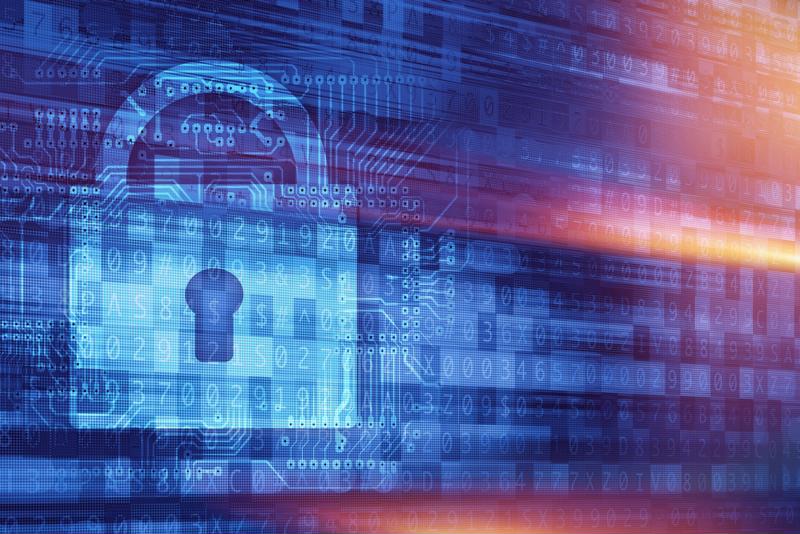As industries worldwide become more digitally integrated, business leaders have to develop proactive methods for insulating sensitive information and systems from a wide range of cyber attacks. Hackers are growing more prolific by the day, creating new malware strains and infiltration techniques to fuel their illegal activities.
According to the Center for Strategic & International Studies research, the global economy loses $600 billion to cybercrime each year, nearly 1% of global GDP. Organizations must create, implement, and continuously optimize their cyber security programs to stay one step ahead. This innovation and enhancement process helps security analysts keep pace with malicious software, social engineering tactics, and vulnerabilities that lead to large-scale data breaches. But how does cyber security work in real-world contexts, and which steps should organizations take to establish a sustainable security posture?
 Organizations must create, implement, and continuously optimize their cyber security programs to stay one step ahead.
Organizations must create, implement, and continuously optimize their cyber security programs to stay one step ahead.What is cyber security?
Cyber security collects technologies, methods, and processes that help protect computer systems, networks, and essential data from cyber attacks and unauthorized access. Since every industry relies on different operational technologies and computing assets, security analysts must align their strategies with their needs. A cyber security program can effectively insulate critical IT resources from external and internal threats, quickly identify potential vulnerabilities, and prevent costly security breaches. However, modern computing environments typically consist of several disparate systems that need some protection. The field of cyber security segments into subdomains, including:
Network security
Network security focuses on protecting private computer networks’ integrity, accessibility, and confidentiality and the data transmitted through them. Companies set strict rules and configurations that limit end-user access to sensitive information using hardware and software technologies. When cybercriminals gain access to a secure network, they can use it as a launchpad to distribute malware, steal essential data, or add vulnerable endpoints to their botnets.
Computer security
Computer security refers to the tools, processes, and policies used to safeguard company-owned endpoints, such as laptops, mobile devices, industrial control systems, etc., from a wide range of cyber threats. Common tactics include installing anti-virus software on all employee workstations, setting configuration restrictions, and implementing advanced authentication protocols. Another critical component of computer security involves end-user training, as employees are often the last defense against social engineering attacks like phishing.
Information security
We often read information security and cyber security are used interchangeably when the two terms have different meanings. Cyber security refers to the broader set of technologies and processes that help prevent security breaches, while information security protects critical data. As noted by CSO Online, information security practices must consider data stored and transit. This approach helps ensure that hackers cannot access confidential information to commit fraud or identity theft.
Application security
Application security concerns vulnerabilities and bugs at the application level that allow attackers to infiltrate private networks. Companies must stay updated with critical patching requirements for business software, applications, and operating systems to prevent security breaches and data theft. For example, Microsoft released a major security alert about seven critical Windows 10 vulnerabilities in April 2020, including two zero-day exploits. Companies that failed to apply the appropriate security patches were easy targets for hackers aware of these publicly available exploits.
 IT administrators must deploy advanced user authentication methods and traffic filtering tools to safeguard against unauthorized access.
IT administrators must deploy advanced user authentication methods and traffic filtering tools to safeguard against unauthorized access.Cloud security
The rapid adoption of cloud technologies has forced companies to integrate new security measures into their IT frameworks. Cloud security provides an extra layer of protection for systems, applications, and data stored or runs on the cloud. Considering the average enterprise currently uses around 1,295 cloud services, according to research from Netskope, IT administrators must deploy advanced user authentication methods and traffic filtering tools to safeguard against unauthorized access.
An effective cyber security program incorporates each subdomain into a unified approach that quickly adapts to new threats and vulnerabilities. When paired with real-time monitoring, threat detection systems, and end-user education, cyber security can help organizations:
- Reduce the frequency and severity of security breaches
- Protect essential data from theft and exploitation, including sensitive consumer information
- Improve recovery times following a cyber attack or data breach
- Enhance end-user privacy and the confidentiality of login credentials
- Limit dropped productivity caused by unplanned downtime.
Cyber security can also help companies manage security breaches’ operational and financial repercussions alongside the above benefits. According to an IBM report, a data breach’s average cost stood at $3.92 million in 2019.
However, organizations that took key cyber security measures, setting up an incident response team, using encryption, and training employees on best practices, reduced the cost of such a breach meaningfully. Ultimately, the best way to improve an organization’s IT posture is for security analysts to understand the different attack methods hackers use to infiltrate networks, computers, and data stores.
Top cyber attack tactics
Malicious actors are continually looking for new vulnerabilities to exploit, making cyber security awareness a top priority for every organization. Each attack method has its own set of repercussions and mitigation strategies, which is why a one-size-fits-all approach is often discouraged.
Instead, organizations must build a knowledgeable team of security analysts and third-party IT experts who can adapt to emergent threats and take decisive action when it matters most. According to Cisco, the most common types of cyber attacks targeting businesses include:
- Malware: Hackers use all sorts of malicious software to take control of key network components, steal important data, and hold companies, hostage. By delivering spyware, ransomware, viruses, and worms to critical workstations or management consoles, hostile actors can establish a foothold within private networks. Having persistent access allows hackers to expand their malware distribution capabilities and avoid detection while siphoning off sensitive information to sell on the dark web.
- Phishing scams: Phishing is one of the most common forms of social engineering. Hackers send deceptive or fraudulent communications to trick users into handing over their login credentials or clicking on an infected link. These operations’ primary goal is to steal sensitive information, or access secured control servers to launch more extensive hacking campaigns. According to Verizon’s 2019 report, roughly 32% of data breaches in 2019 involved phishing at some level, which is why end-user training is essential to any organization’s cyber security posture.
- Zero-day exploits: Companies rely on a patchwork of software and applications that require near-constant monitoring and updating to remain secure. Technology companies are quick to release a security patch for newly discovered vulnerabilities. However, organizations that do not immediately deploy these updates can face heightened risk, as many vulnerabilities are disclosed publicly. Vulnerability testing and patch management are essential to any cyber security program for confirming patch updates.
These are only a few of the most common cyber attack methods leveraged against businesses, yet they help illustrate the broad spectrum of threats companies experience. A lack of strategy on essential asset protection priorities can create a high degree of confusion for leadership teams, leading to time and money misallocation.
As a proud supporter of American companies, Certitude Security® is working diligently to inform leaders and facilitate essential asset protection priorities for manufacturers and supply chains throughout the United States.
Problem discussions can be a defining moment in your career. If you are interested in value creation, learn about SPOT-Beam™ by Certitude Security®. We look forward to helping you and your business succeed!

